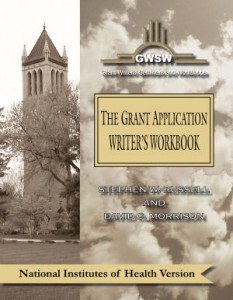It is a simple fact of life that, similar to every other profession, scientists uniformly aspire to be successful in their chosen profession. Of potential importance, therefore, a very important recently published study by Andrew Higginson and Marcus Munato in the well-respected journal, PLOS Biology, November 10, 2016, page 1371 provides a fascinating insight into one way to do this. To address this question, Drs. Higginson and Munato adopted a relatively novel approach in which success in science was perceived as an ecosystem with each scientist trying to maximize his/her “fitness” (with fitness being defined by publication record and career success). Then, using an ecological optimality model, which is designed specifically to predict the most rational research strategy required to achieve “success”, they then calculated the percentage of research effort that should be devoted to exploratory preliminary studies (that might lead to novel, publishable findings) versus comprehensive maximally confirmatory studies.
Their results, perhaps not surprisingly, would be entirely consistent with current strategies recognized by most scientists as being required to achieve success in the scientific publication arena. In this respect, it is generally recognized that novel research findings reported in highly prestigious scientific publications are often regarded as having significantly more value than more comprehensive studies published in specialty journals. (This issue is extensively discussed in our recently revised and updated text, Writing for Biomedical Publication – currently in press, 2016). Unfortunately, the available evidence, as pointed out by Higginson and Munato, would suggest that many such relatively small (and frequently underpowered) novel published research findings “have only 10%-40% statistical power” and about half of them are likely to report erroneous or even non-reproducible findings.
Given these observations, Drs. Higginson and Munato conclude that “researchers acting to maximize their (ecological) fitness should spend most of their efforts seeking novel results and conducting (relatively) small studies” rather than very comprehensive studies likely to have highly reliable and reproducible results. While it would be extremely difficult to lend strong support to this approach to doing science, it would be equally difficult to argue that such strategies should not, at least in part, be pursued by untenured science faculty striving to ensure their academic futures or even tenured faculty struggling to maintain a high level of productivity. This latter issue is underscored by the fact that, at many academic institutions, a faculty member’s salary is directly tied to level of grant support, which, in turn, is tied to a strong publication record (preferably in highly prestigious scientific publications).
Nevertheless, efforts are currently under way to counteract such trends by federal funding agencies that provide support for much of the nation’s research. A case in point is the recent decision by the NIH to emphasize the importance of scientific rigor and evidence of the underlying scientific premise for all proposed research. In large part, this decision was reached based upon conclusions of senior administrators at the NIH who have expressed deep concern about the lack of reproducibility of many published NIH findings. In this respect, applicants for NIH grant support must now devote extensive efforts to scientific rigor in terms of statistical power of studies, inclusion of both sexes in animal and human research, and quality of research reagents and chemicals. Collaborative efforts and endorsement of these efforts of the NIH by major biomedical research publications in terms of acceptance for publication should go a long way toward reversing these disturbing trends.

